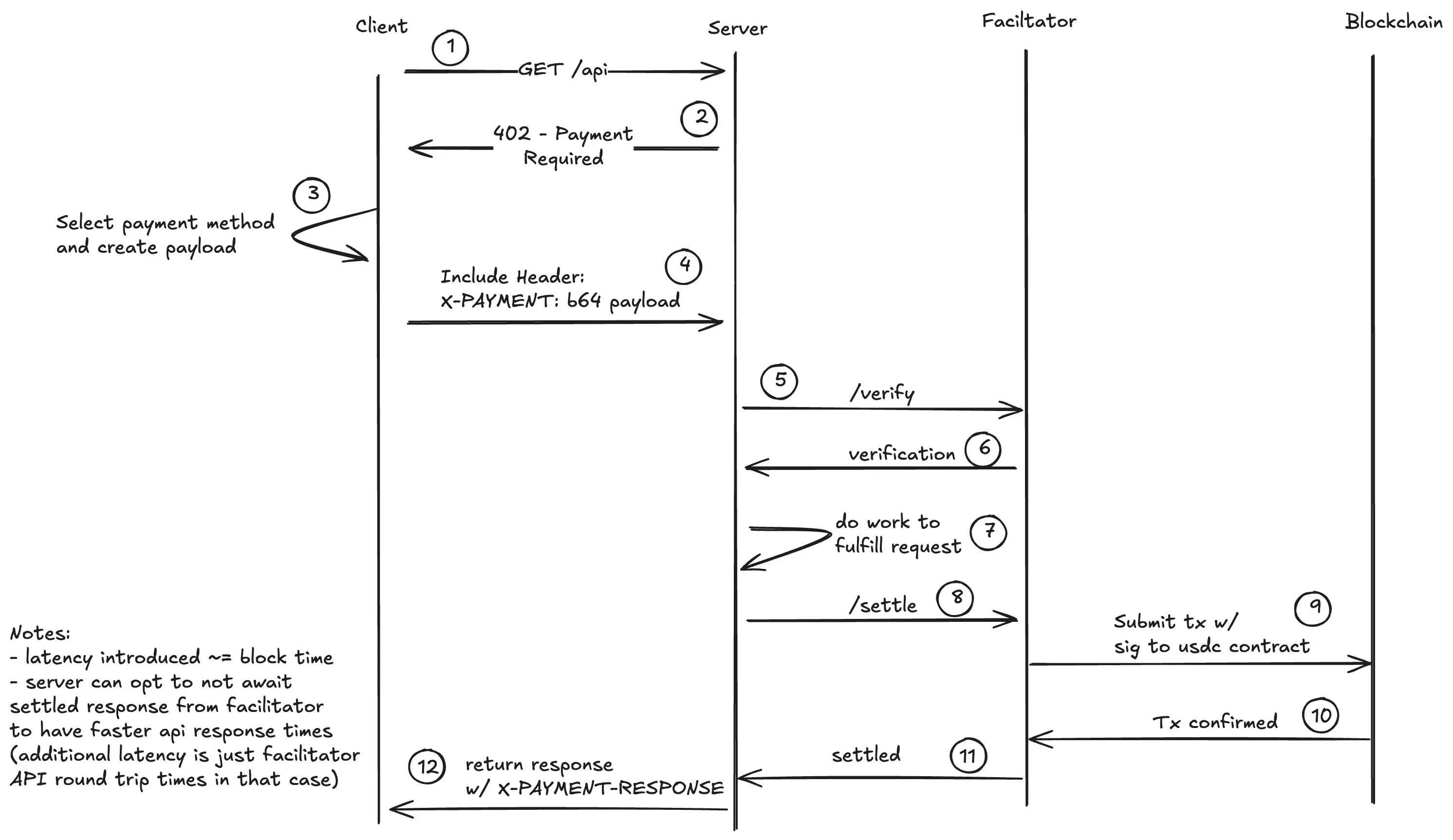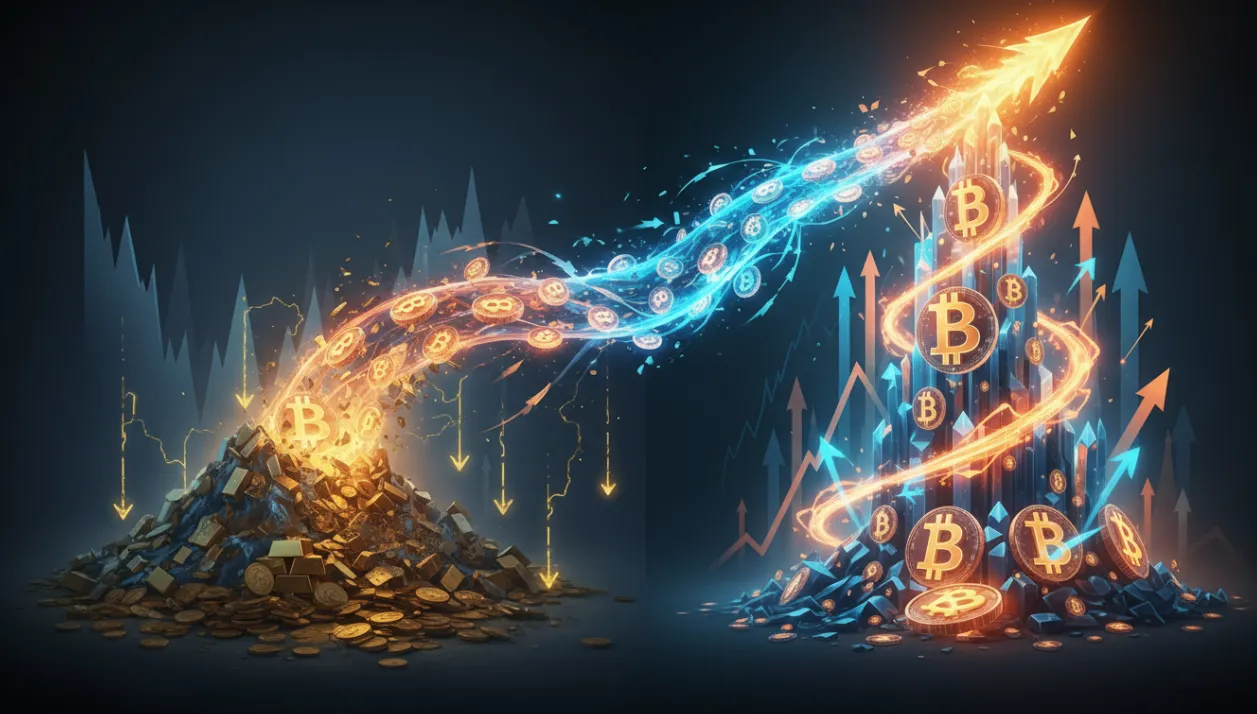From the forgotten HTTP status code of 1999 to a trillion-dollar market in 2025, how does the x402 Foundation turn a line of code into the golden key for AI payments?
Imagine your AI assistant wants to check today's stock price, but it gets stuck in front of a paywall—no credit card, no account, and it doesn't even know how to "pay." This sounds like a plot from a science fiction novel, but by 2025, it has become a real problem.
The solution to this dilemma is a payment revolution designed for AI agents to "buy things on their own"—the x402 protocol.
And the organization that is turning this "golden key for AI payments" from theory into reality is a neutral organization supported by giants like Coinbase and Cloudflare: the x402 Foundation.
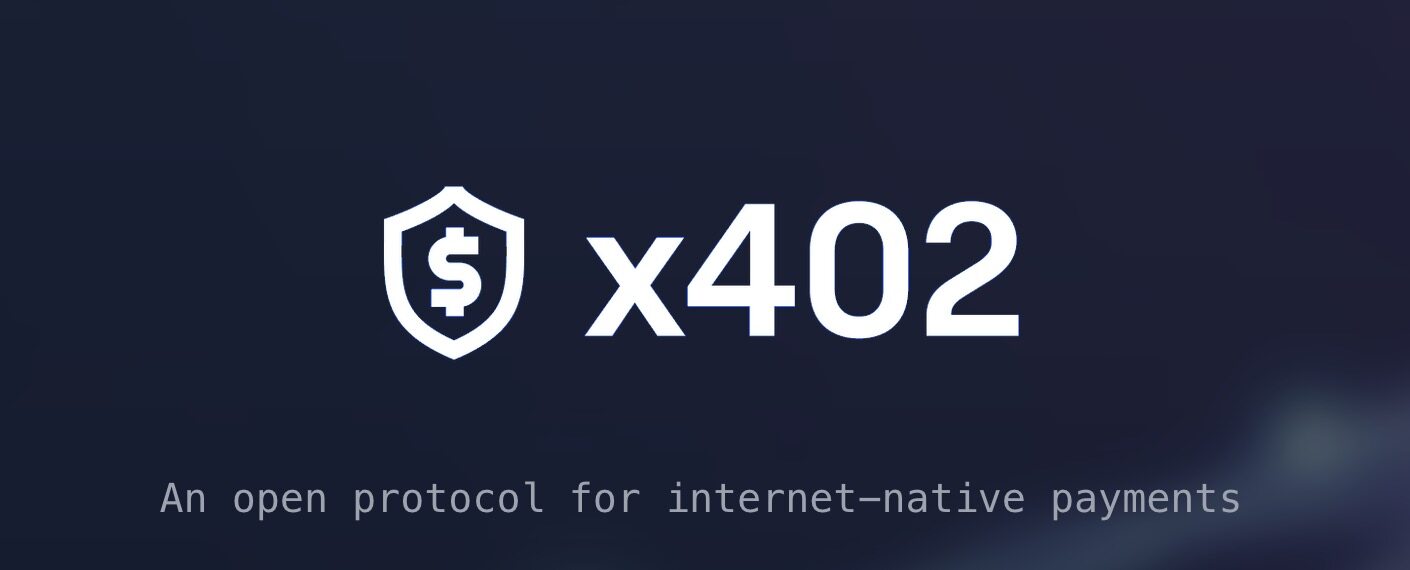
I. From Dusty Archives to Hot Protocol: The "Archaeology" of x402
HTTP 402: The "Unfinished Symphony" of the Internet
The story begins in 1999.
At that time, the HTTP/1.1 specification defined a status code called "402 Payment Required," meaning "Hey, this resource requires payment to access." But the problem was that no one knew how to securely and conveniently collect payments online, so this status code sat like a blank check for over twenty years.
The best innovations often do not invent something entirely new but rather revive old components in a new environment.
It is not a creation out of thin air but a clever revival of the dormant HTTP 402 status code. This "forgotten tool" has found its destiny in the AI era.
The working principle of the protocol can be understood through a daily scenario:
- AI requests service: An AI assistant wants to obtain the latest weather data.
- Server requests payment: The API server returns a "402" code, saying, "Sure, but please pay $0.001 first."
- AI makes automatic payment: The AI assistant immediately sends a micro-stablecoin payment via blockchain (like Base).
- Service completed: The server confirms receipt and immediately returns the data.
The entire process is completed automatically within seconds, without redirects, logins, and with almost zero fees. This fixes the "payment flaw" of the internet, allowing value to flow as freely as data. For AI agents that need to conduct massive, high-frequency, microtransactions, this is simply the "best partner."
Why is it suddenly popular now?
Because this is a payment revolution for the machine economy, and the x402 protocol is at the eye of the storm.
Currently, industry trends are driving the rise of the machine economy. This week, the crypto division of venture capital firm a16z mentioned in its latest crypto status report that by 2030, the scale of autonomous transactions could reach $30 trillion.
The Coinbase development team also pointed out that AI agents are ushering the machine economy into a new era: without human intervention, AI agents can autonomously complete everything from payments to data storage. These trends make the x402 protocol the best candidate for solving payment issues.
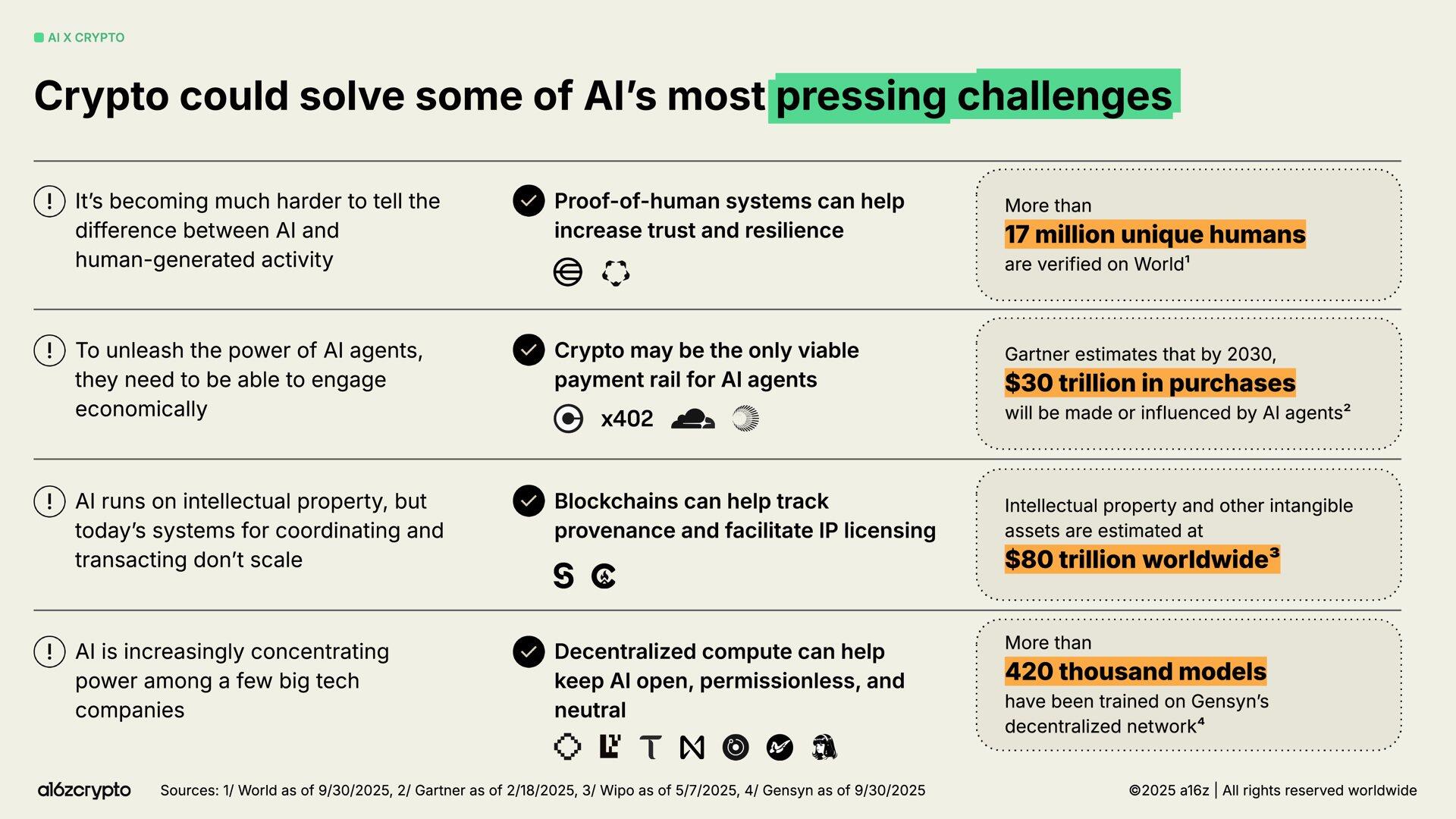
II. The Driving Force Behind the Scenes: The "Tale of Two Cities" of the x402 Foundation
Coinbase + Cloudflare: A Match Made in Heaven or Each for Their Own Needs?
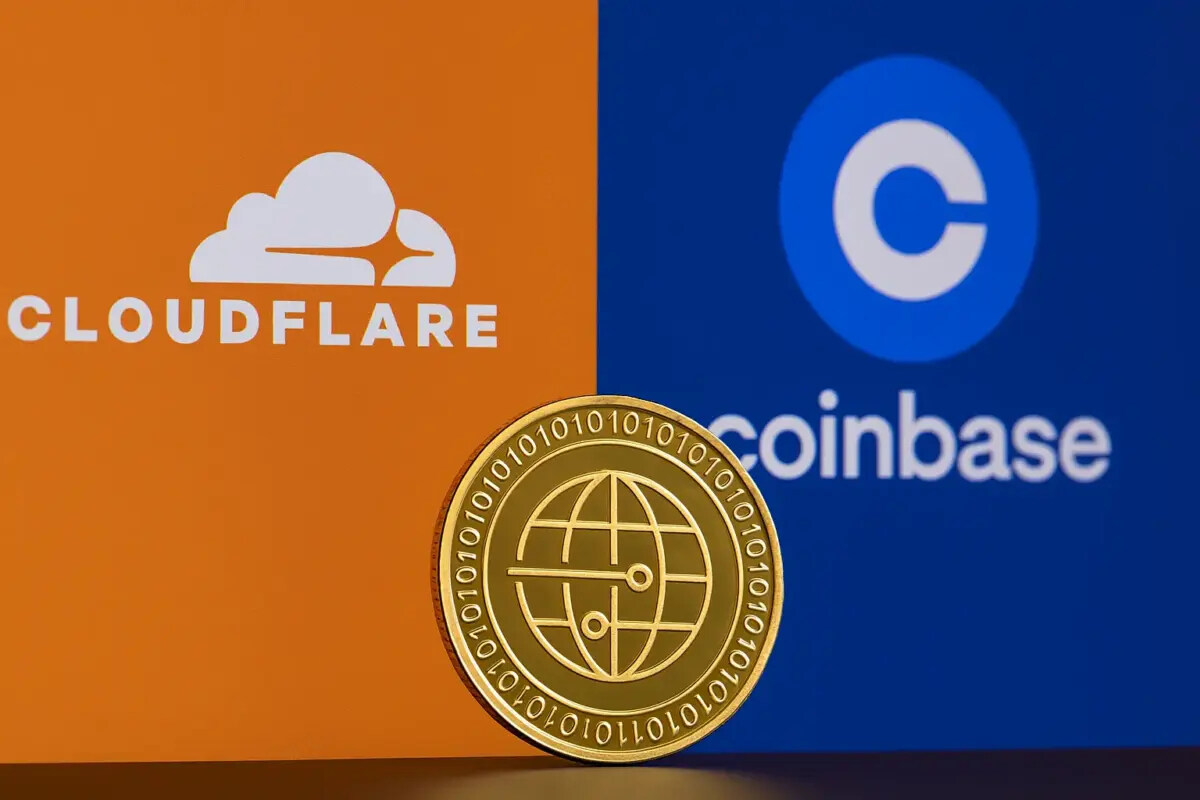
In September 2025, two seemingly unrelated giants came together:
- Coinbase: One of the largest cryptocurrency exchanges in the world, controlling the infrastructure for stablecoin payments.
- Cloudflare: A CDN giant serving 20% of the world's websites, controlling key nodes of internet traffic.
Why these two?
Coinbase has payment capabilities but lacks a distribution network; Cloudflare has a global network but needs a new business model. The x402 protocol perfectly complements the strengths of both: Coinbase provides blockchain payment technology, while Cloudflare offers a global edge computing network, together building the infrastructure for the "machine economy."
Core Team: The Fusion of Web2 and Web3
The x402 Foundation adopts an open governance model, with core members including:
1. Dan Kim (Vice President of Business Development at Coinbase): Responsible for strategic partnerships and ecosystem building
- Core value: The "super connector" of the traditional financial world.
- Career highlights: Previously led global payment strategies at giants like Visa and Airbnb, with extensive experience in institutional partnerships.
- Strategic significance: Opens doors for x402 to traditional financial institutions, ensuring compliance pathways and mainstream adoption.
2. Erik Reppel & Nemil Dalal (Coinbase): Co-authors of the x402 white paper
- Division of labor: Erik focuses on technical architecture design, while Nemil concentrates on product strategy and compliance integration.
- Core contribution: Co-authors of the x402 white paper, they built a complete "technology - market - regulation" triad framework.
- Unique advantage: Their combination covers the entire chain from underlying technical standards to market implementation, providing dual assurance of technology and market for the project.
3. William Allen (Cloudflare): Provides network infrastructure support
- Technical assurance: A top expert in global network infrastructure, providing enterprise-level stability for x402.
- Value manifestation: Cloudflare serves 20% of global website traffic, and its technical standards endorse x402.
- Strategic role: Ensures high availability and security of the protocol globally.
Team Chemistry: 1+1+1>3
Coinbase's compliance gene × Cloudflare's infrastructure strength = A perfect entry point for traditional institutions.
This combination precisely targets the core pain points of traditional institutions: the need to embrace Web3 innovation while ensuring compliance and security. The team has formed an iron triangle of "compliance - technology - infrastructure."
Ultimate goal: To become the "golden channel" for Web2 giants to enter Web3, gaining policy recognition while seizing the payment entry point of the machine economy era.
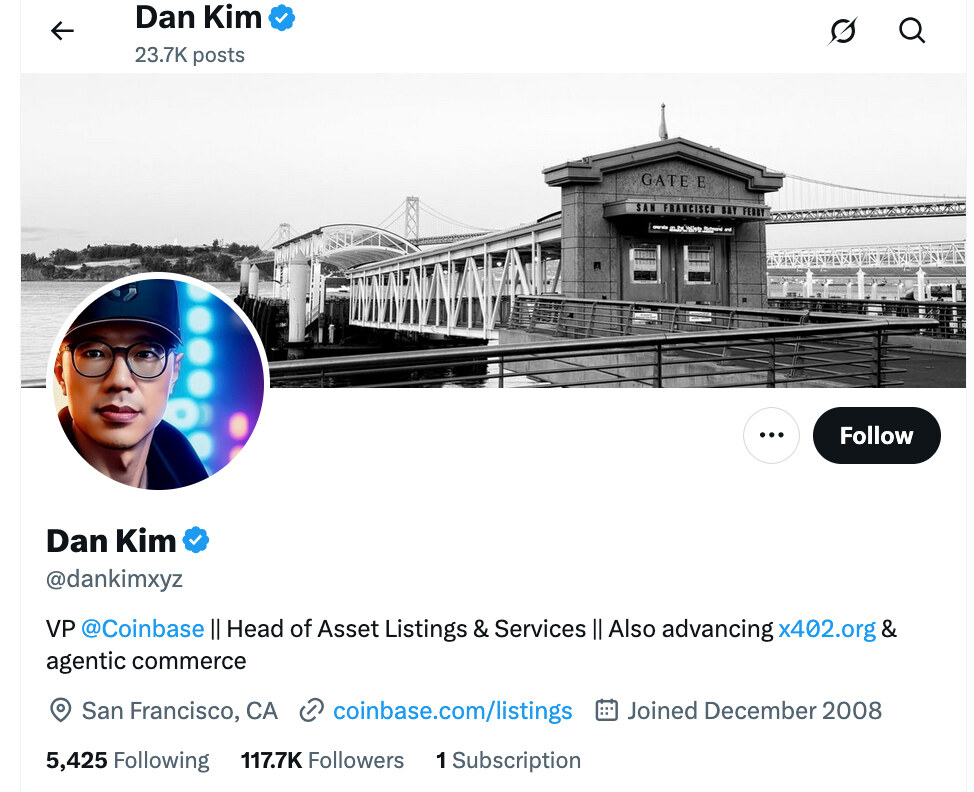
Currently, about 60 contributors from various ecosystems are involved in protocol development. It does not belong to any single company but is a neutral governance body with the mission to:
- Promote standardization: Make the x402 protocol the official web standard of W3C (World Wide Web Consortium).
- Build the ecosystem: Attract global developers to build applications on x402 through funding, tools, and hackathons.
- Achieve decentralization: Ultimately transfer governance of the protocol entirely to the community.
Tangible Results from Code to Ecosystem
The x402 Foundation is not an organization that merely talks about ideals; it is a doer. In just a few months, they have built a rich and diverse ecosystem:
- Representative projects: Questflow (AI agent orchestration), PayAI Network (cross-chain payments), AurraCloud (AI Agent infrastructure).
- Data performance: Completed 524,000 transactions in nearly 90 days, totaling over $520,000, with rapid growth momentum.
- Developer support: x402.org provides specifications and SDKs, while Cloudflare and thirdweb's tools support integration with 170+ chains and 4,000+ tokens.
Hackathons and bounty programs have attracted global developers, with over 200 new projects incubated based on x402.
More importantly, the foundation maintains neutrality, ensuring the protocol is open to anyone—whether you are a large company or an independent developer, you can expand freely.
Giants Entering the Game: From Pilot to Strategic Cooperation
More importantly, there is recognition at the industry level:
- Google: Integrating x402 into its A2A and AP2 frameworks.
- Visa: Launching payment solutions in conjunction with its Trusted Agent Protocol.
- Circle: Providing USDC stablecoin support.
- thirdweb: SDK supports integration with 170+ chains and 4,000+ tokens.
What does this mean? No longer a niche experiment in the crypto circle, but a serious layout by traditional tech + financial giants.
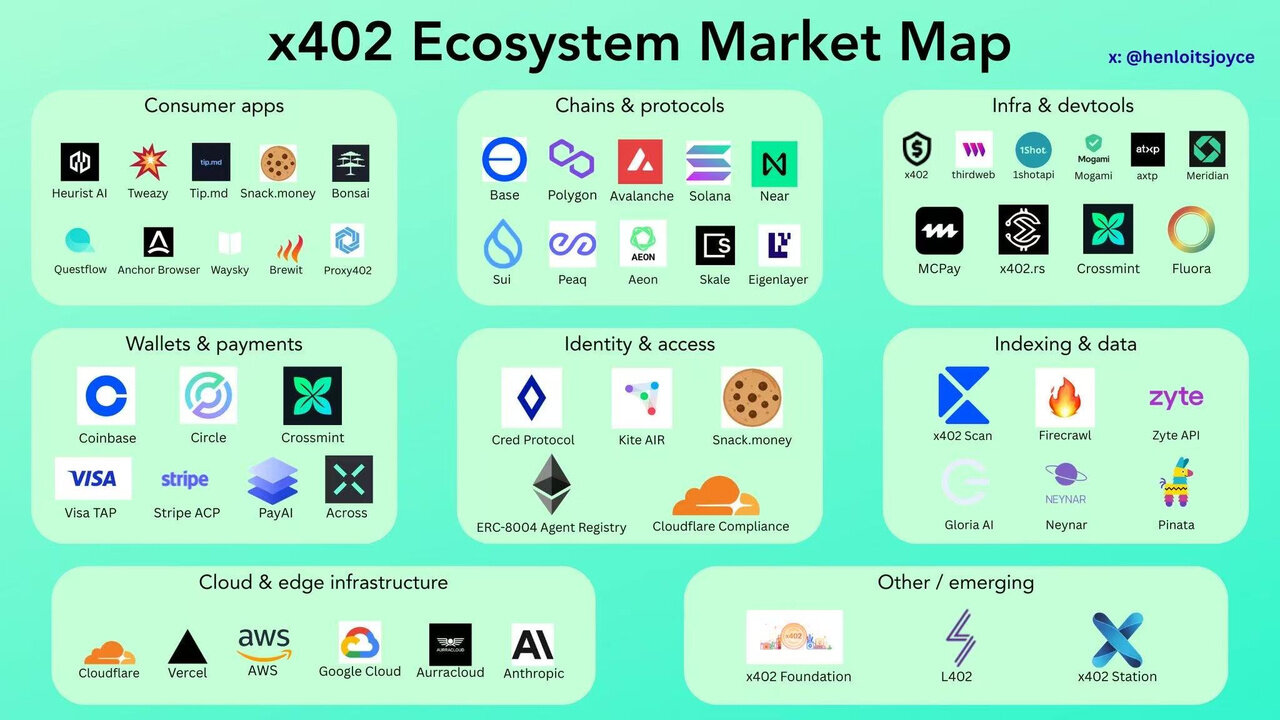
III. Deep Thoughts: Why x402 Might Change Everything
Economic Principle: The Power of Lowering Transaction Costs
Economist Ronald Coase once said, the fundamental reason for the existence of firms is to lower transaction costs. What x402 does is essentially the same—it brings the transaction costs of payments down to nearly zero:
- Time cost: Reduced from minutes to seconds.
- Cognitive cost: No need to register, log in, or remember passwords.
- Technical cost: Developers can integrate with just a few lines of code.
- Economic cost: Only on-chain gas fees, no protocol fees.
When transaction costs are low enough, transactions that were previously uneconomical become feasible. This is why concepts like micropayments, pay-per-use, and autonomous trading by AI agents have suddenly become a reality.
Network Effects: The "Critical Mass" of Payment Protocols
Payment networks have a characteristic: the more users there are, the greater the value. The brilliance of x402 lies in:
- Open standards: Anyone can implement and extend it.
- Multi-chain compatibility: Not tied to a specific blockchain.
- Backward compatibility: Seamless integration with existing HTTP infrastructure.
This design makes it easier for x402 to reach "critical mass"—when enough services support x402, those that do not will seem outdated.
IV. Challenges and Opportunities: Reality Check
The vision of the x402 Foundation is vast, but the road ahead is not smooth.
Challenges:
1. Applying for W3C National Standards:
To become a global standard, it requires lengthy negotiations and recognition from international organizations like W3C.
How difficult is it to obtain this "pass"? Becoming an international standard is akin to applying for a Nobel Prize: it requires solid technology, peer recognition, and enduring a long process. The standard-setting process at W3C typically takes 3-5 years, involving proposals, drafts, testing, community voting, and other stages.
2. Intense Competition:
Google is pushing the AP2 protocol (embedding bank cards and transfers into AI applications like APIs), and new models like Model Context Payments (MCP) are emerging. The good news is that Cloudflare has already integrated x402 support into its Agents SDK and MCP servers, marking the first step towards "multi-track interoperability."
3. Ecosystem Maturity:
Despite rapid growth, the ecosystem is still in a very early stage. As a new protocol, the x402 ecosystem is currently in its infancy. Coinbase has provided reference implementations and developer toolkits, but there is still insufficient multi-party implementation and interoperability testing. To become an industry standard, x402 must attract more third-party developers and infrastructure providers to participate and establish a comprehensive interoperability testing matrix.
Opportunities:
However, the opportunities are historic. With the AI agent economy expected to reach $10 trillion by 2030, a native, decentralized payment layer is indispensable. x402 is well-positioned to become this core infrastructure.
V. How to Participate in the X402 Ecosystem
The official website of the x402 protocol features an Ecosystem page that lists the current ecosystem overview. Clicking through, one quickly realizes that this is still an early journey: many projects link directly to technical documentation, and a considerable number simply direct you to GitHub. In other words, the narrative comes first, while products and applications are still in development.
But early does not mean lacking context; the composition of participants has already vaguely outlined three clear capital mainlines:
- First, infrastructure builders: Coinbase is the most obvious beneficiary; it is not only a participant but also a rule-maker and foundation-layer.
- Second, the first "residents"—AI agent applications. Especially those projects that have announced integration. AI agent technology is currently a hot topic in the cryptocurrency field, and the x402 protocol has attracted the attention of several AI agent projects. The integration of these projects will further promote the development and application of the x402 protocol.
- Third, location and neighborhoods—Base ecosystem. x402's choice to focus on Base is not coincidental. Choosing a battlefield means choosing a growth curve: the concentration of developers often determines the toolchain, distribution, and cognitive path dependencies.
Conclusion: From Information Internet to Value Internet
The internet has spent thirty years solving the free flow of information, but it has always had flaws in the flow of value. We are accustomed to obtaining information for free, yet we are troubled by various frictions when payment is required: registering accounts, binding bank cards, remembering passwords, handling refunds…
What x402 aims to change is this status quo.
It makes payments as simple as sending an email, allowing AI agents to autonomously complete transactions like humans, and enabling developers to focus on creating value rather than handling payment logic.
This is not another declaration of "disruptive technology," but a pragmatic solution: solving the most practical problems in the simplest way.
If successful, x402 could become the HTTP of the value internet. If it fails, at least it proves that a forgotten status code can still create a huge wave.
In any case, this story is worth our continued attention.
免责声明:本文章仅代表作者个人观点,不代表本平台的立场和观点。本文章仅供信息分享,不构成对任何人的任何投资建议。用户与作者之间的任何争议,与本平台无关。如网页中刊载的文章或图片涉及侵权,请提供相关的权利证明和身份证明发送邮件到support@aicoin.com,本平台相关工作人员将会进行核查。

